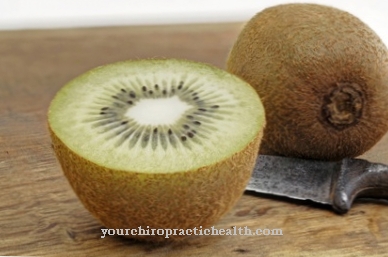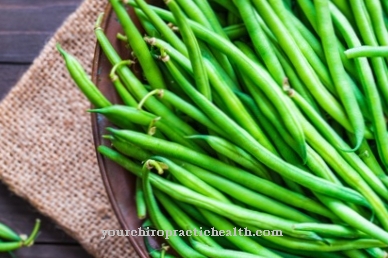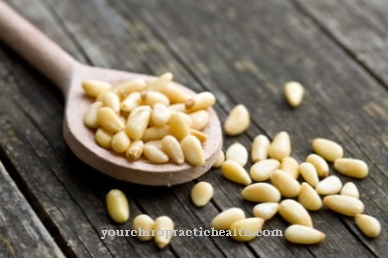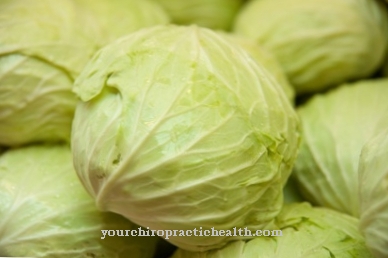The Seaweed belong to the phycophyta, the seaweed plants. Together with their more pronounced shape, the seaweed, algae originally came from the kitchens of East Asia as food.
They generally have a salty and spicy taste. On the other hand, some of the many thousands of species are almost tasteless. The algae provide numerous minerals, high-quality proteins, carbohydrates, many vitamins and active plant substances. Well-known arenas are nori, wakame kombu and many others.
What you should know about algae

For a long time, algae (from Latin alga = sea grass, worthless), which in their large form are also called seaweed, were only popular decorations for fish buffets and oyster presentations.
Today, with almost 26,000 species, the algae are considered to be one of the world's last great food reservoirs. The leaves from the sea are assigned to the thallophytes or storage plants and botanists also count them to the lower aquatic plants. They are fished mainly off the coasts of Japan, Ireland, Scotland, Wales and north-west France.
In Japan in particular, algae are a staple food. The dried algae are skillfully regenerated in Nippon's kitchens by soaking and blanching and are used in a wide variety of ways. But they are also becoming more and more popular in Europe, since the taste discoveries began with the purely optical effects of an algae decoration. Today, algae are the appetizing coating of many Far Eastern delicacies such as Makisushi.
Known types are u. a. Arame, Dulse, Hijiki, Kombu, Laver, Limu, Nori and the Wakame Kombu. All in all, “Poseidon's garden vegetables” are not only delicious, but also very healthy.
Importance to health
An example of the high health value is Spirulina, which is often touted as “green gold” and as algae, but botanically it is not an alga at all. The bacterium sometimes still bears its outdated name "blue-green algae", not quite rightly.
Probably because the scientifically correct name suggests the color - cyanobacterium. The bacterium is said to hit the stomach here and there. Nevertheless, international nutritionists prophesy a great future for these tiny creatures.
Because they provide far more protein, vitamin B12, beta-carotene, iron and valuable gamma linolenic acid than many other well-known foods. In addition, there is just as much calcium and magnesium as there is in milk. The sum of valuable ingredients makes spirulina particularly interesting as a dietary supplement for many people who are plagued by civilization and even as a possible cancer drug of the future.
The healthy ingredients of many actual types of algae are contained in the so-called "alginates" for gelling agents and in various basic substances for drug capsules and agar-agar.
Ingredients & nutritional values
The algae are particularly rich in calcium, phosphorus and iron. On the other hand, they are low in fat and calories. They contain around 30 percent vegetable protein, the valuable vitamins A and B12 and also carbohydrates, minerals, flavonoids and polyphenols.
100 grams of fresh algae contain an average of 90.5 grams of water, 5.9 grams of protein, 2.1 grams of carbohydrates as well as 0.4 grams of fat and 50.0 μg of iodine. 100 grams of algae have a calorific value of 36.5 kcal = 153.3 kJ.
Intolerances & allergies
From time to time there are reports of heavy metal contamination of the algae. On the other hand, they can help to correct the regionally pronounced iodine deficiency in this country. The strong fluctuations in the iodine content must be taken into account (5 to 460 mg per kg), because the daily dose of 200 µg can quickly be exceeded when consuming algae.
Even 1 mg per day is harmful to health. From 20 mg per kg of iodine content, dry algae must bear a corresponding warning in Germany. From 1,000 mg per kg they are no longer marketable.
Shopping & kitchen tips
After the harvest, the algae are usually dried and later watered again for preparation, regenerated and generally boiled for around 20 minutes. Asian shops have a large selection of different varieties.
Preparation tips
Algae are fried, boiled, steamed or pickled in vinegar. They taste good with sushi, in soups, as vegetables or as a salad. Brown, red and green algae are used differently:
- The species Arame is a brown and wavy seaweed that is one of the brown algae. The algae are fished off the Pacific coast. Arame is a rarely sweet and mildly neutral sea vegetable in Japanese cuisine, usually finely cut into strips.
- Dried cartilage wrack is Irish moss. It comes from the west coast of Ireland or from the American Atlantic coast. It is used to extract carrageenan and in this form mainly as a cosmetic additive and as a thickener.
- Dulse or rag wrack is a red alga. It also thrives off the British Isles, has a slightly nutty taste and its dry consistency makes it the ideal substitute for chewing tobacco.
- The type Hijiki or Hisiki is sold dried and black in color. It has a slight aniseed aroma and is mainly used in soups.
- Kombu comes into stores in dark brown to dark green in dried or folded form. When stored in a dry place, this type of algae can be kept almost indefinitely. It is the ideal aroma provider in everything cooked and for sushi. Like others, this species is a well-known staple food in Northeast Asia.
- Art Laver is dried and available in slices. Before cooking, it must be soaked for at least an hour. Dark red Laver has an intense tangy taste. Laver is a nice appetizer when fried. It is also popular as a soup addition.
- Limu is the Hawaiian name for a total of more than two dozen types of algae that can be used culinary in soups, salads, as vegetables and for sushi.
- Nori are well known and popular for wrapping sushi or rice balls. Wafer-thin nori roasted or dried in shades from dark green to red to black are bought.
- The type of wakame kombu is traded dark green or brown and is used in kitchens like a vegetable for soups, salads or boiled foods.
- Belt wrack, sweet sugar wrack, wing wrack and fingertrack are other well-known types of brown algae. Brown algae can also be fermented. This creates the so-called algae wine with an alcohol content of 11 to 13% vol. The taste of the new algae drink is reminiscent of sherry.
However, for reasons of food law, the product may not be called wine because it is not made from grapes. The drink is currently called "alcoholic drink based on algae" and falls under the EU Novel Food Regulation.
- The purple kelp, red kelp or needle wrack come into our kitchens from the coasts off the European mainland. There is also the so-called sea salad. It is also called sea lettuce and belongs to the green algae species. Sea salad is particularly tasty in a refreshing salad or as a ground bread addition.












.jpg)



.jpg)










.jpg)
